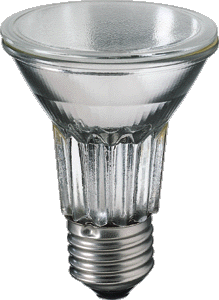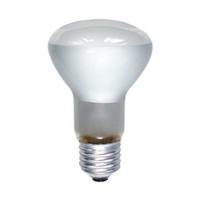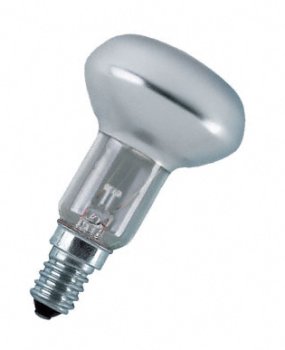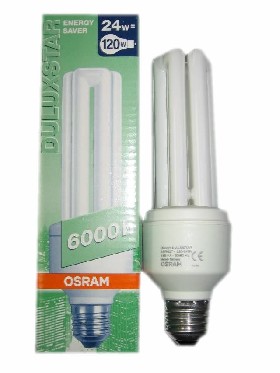Hello colleagues
The undisputed point is that
"Halogen lamps with the same wattage as ordinary halogen lamps give off much more heat". But it is puzzling that lighting manufacturers are releasing halogen and incandescent lamps on the same cap, for example on the E27. So for an ordinary bread eater it is clear that: if a 50W halogen bulb can be screwed into a place where there was another 50 W (e.g. incandescent), it means that it can be used.
An example is this halogen bulb with a description downloaded from the Internet:
Philips PAR20 HalogenA E27

A halogen reflector lamp with a diameter of 63 mm for mains voltage. Halogen burner housed in a parabolic, aluminum-coated pressed glass (PAR) reflector. Constant illuminance throughout the entire period of use. High luminous efficiency. Durability 2.5 times longer than that of an ordinary incandescent lamp. Projector version with faceted front glass which prevents glare and ensures uniform distribution of luminous flux. Transparent front plate of the burner protects against contact and the accumulation of dust and moisture. Bright, sparkling halogen light. Convenient halogen solution that can be used in mounted luminaires. Application: for creating lighting accents and for lighting shop windows, for local lighting and for creating lighting accents in homes.
Light fixtures: It can be installed in any lighting fixture, for which R60 or R63 incandescent lamps are used !!! , In external lighting systems, the lamp should be protected against direct contact with water, The luminaire must ensure a waterproof connection between the reflector and the luminaire, Power supply: 230 V, socket: E27, power: 50 W, color temperature 2500K, average life: 2000 h, beam angle: 10.
This is what the R63 E27 60W bulb looks like

Maybe the answer can be found in the link provided by Stefan55 that
,, In a year, in September 2010, 75 W bulbs will be phased out, and in autumn 2011, 60 W bulbs will be phased out. At the end of September 2012, the weakest ones - with a power of 15, 25 and 40 W. the day when the brilliant invention of Thomas Edison from 130 years ago goes to the museum of technology in Europe,
And yet we will have to screw something into our old frames. Regards
Added after 2 [hours] 36 [minutes]: I have a proposal for stefan55, maybe this bulb will meet the expectations?
Description and photo:
HALOGEN PHILIPS HALOGENA CG35 E14 40 W

Mains voltage double bulb halogen. Linear two-fold filament with electrical protection. Built-in overvoltage fuse. The burner is axially placed in a single-ended ordinary glass bulb filled with a mixture of inert gases.
Interchangeable with standard incandescent lamps, corresponds to the dimensions of standard incandescent lamps. Spherical bubble shape.
It can replace incandescent lamps of the same power . Cap temperature the same as for incandescent lamps . Bright white halogen light. Constant level of illuminance throughout the entire period of use. Application: In homes, offices, shops, hotels, restaurants, bars and museums. Luminaires: in indoor applications in open luminaires, in outdoor applications it is necessary to use front windshields and water and moisture resistant luminaires. Power supply: 230 V, socket: E14, power: 40 W, color temperature 2900K, average life: 2000 h, type of bulb: transparent.
Added after 19 [minutes]: Halogen Osram ES Classic P 64543 P ES 42 W 230V E14 FS1
Halogen Classic P bulbs are an energy-saving alternative to traditional bulbs.
Replacing light bulbs does not require any additional changes in the housing. 100% interchangeable. The use of Halogen ES Classic P bulbs will allow you to save up to 30% of electricity and significantly reduce operating costs. An additional advantage of Halogen ES Classic P bulbs is their two times longer life than traditional bulbs. Lifetime 2000h. E14 cap.









